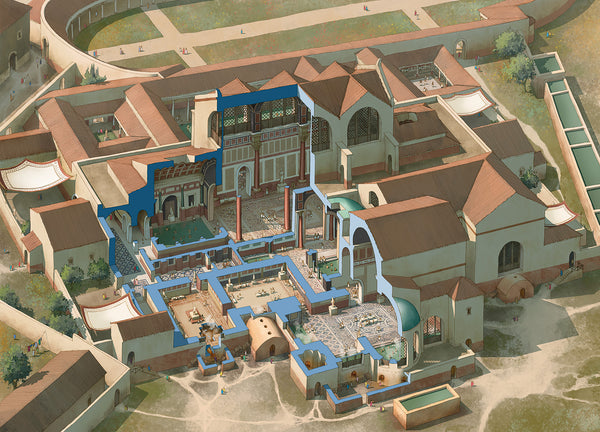Testing Land of the Free
At our AWI day in august of next year, we’ll be playing a variety of battles using Muskets & Tomahawks, Black Powder and Land of the Free (LotF). I’d been introduced to this game by my friend Rob R in Ohio, but the game Peter played in - see previous link - was only my third. In the meantime, Patrick D and I, both involved in the organisation of PolderCon, had decided to run two introductory games of that system come PolderCon next february. In short, we’re high on enthusiasm, but a bit low on experience and routine, both of which tend to come in handy when you’re supposed to explain the game to someone else in a somewhat smooth manner. So Patrick and I have embarked on a learning curve. He came over last Sunday to run through a game without too many bells and whistles (LotF has a nice range of special rules that can be attached to units to make them more like their historical counterparts, much like Black Powder). Patrick also used our game as a test-run for his very nice set of markers for LotF that make the administration required at least very manageable and actually quite attractive too (photos below).
We decided on a straight fight using the ‘Take the Field’ scenario with each force consisting of two groups. The American commander (Patrick) had four standard-size regiments of American Continentals, one standard-size regiment of militia and one small regiment of militia. Three Continental regiments were in one group with a gun, one Continental regiment with the militia and another gun comprised the second group. The British commander (me!) had two regiments of Loyalists and three regular regiments of British infantry and one of Grenadiers, all standard-size. Again, because we didn’t use the special rules, all regiments counted and performed the same. The groups were evenly divided, again with each a gun. All guns were in the less-than-12lbs bracket, and it seems that LotF does not differentiate between three- and six-pounders, the most common types of field artillery during the AWI. If that’s true, we might house-rule something there.
Last Sunday I posted a live battle report on the WSS Facebook page. Suffice to say that after a very enjoyable three-odd hours, we called a British victory. It was a very educational exercise that did bring out some of the best points of this rule-set. The fact that players alternate group activation, based on per-turn initiative, and that units within groups generally have three maneuver - and three combat orders and can only be activated once per turn, really requires quite some tactical thinking. It means, for instance, that a unit that comes onto the field in marching column, can advance 6”, change into line, fire at an enemy unit, and then either reload and fire again, or charge into close-combat. The option to ‘store’ a combat or maneuver order each, or use a group or force commander to push a unit further than its standard allowance of moves gives even more options. Combined with a stepped morale system, whereby even the best units inevitably will retreat and finally fail if you push them hard enough, gives a very fun game and an ebb-and-flow type battle that, for me and Patrick at least, gives a good game with a good historical feel. I look forward to more!

